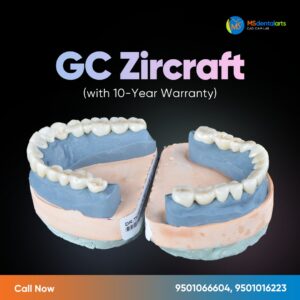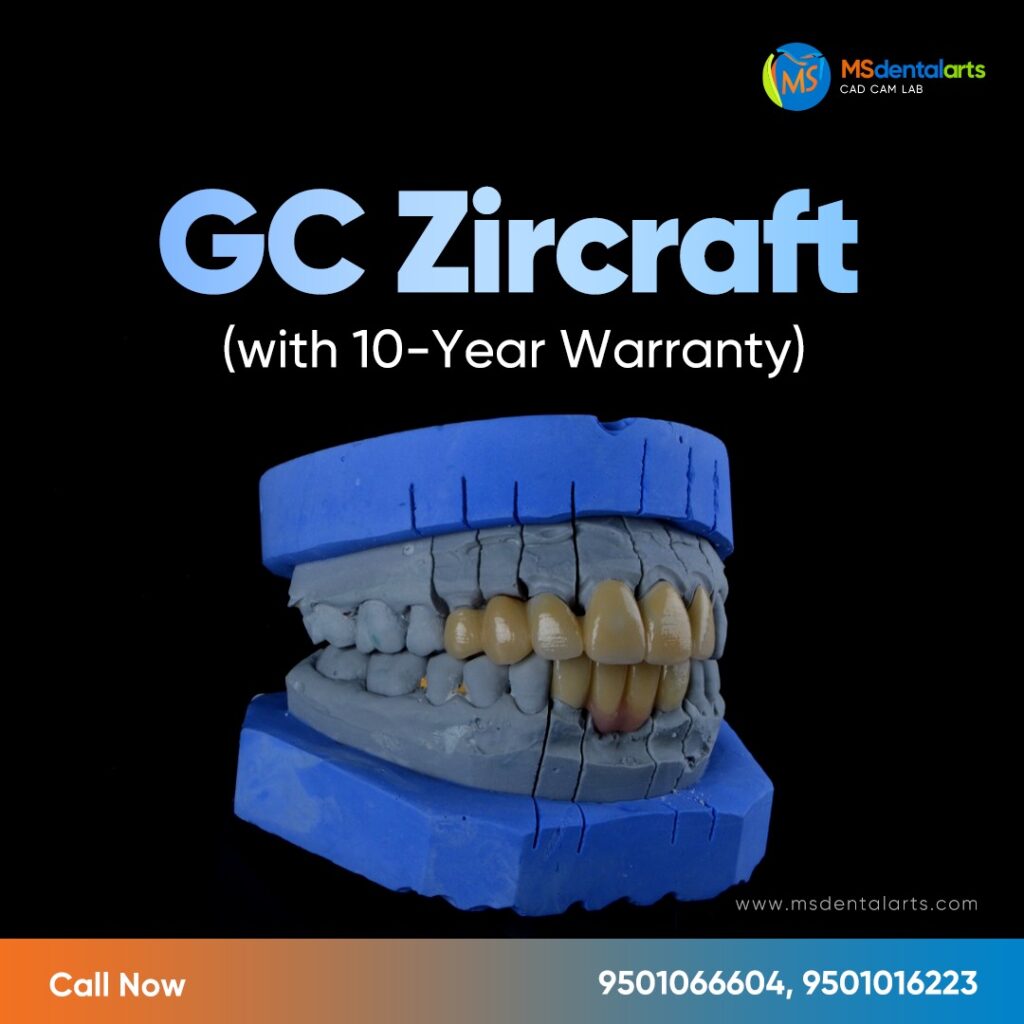By Sarfraz Ahmed

The past ten years have seen an increase in the use of zirconia ( MS Zircraft) crowns. Because zirconia ( MS Zircraft) restorations offer robustness and realistic aesthetics, patients today prefer them to metal-based crowns. Furthermore, zirconia ( MS Zircraft) is quite strong and can survive repeated, vigorous chewing and grinding.
zirconia ( MS Zircraft) restorations can last a patient their entire lifetime if kept up to date. Some dentists choose not to utilise zirconia ( MS Zircraft) crowns or develop the skills necessary to place them in their patients’ mouths because of the material’s recent development. This inexperience might occasionally result in crowns that don’t fit properly.
You should not dismiss problems with the fit of your dental crown. For the patient’s safety, any issues with dental crowns must be fixed immediately.
It’s crucial that you understand how to properly place a crown and how to alter the fit of the crown should issues emerge because zirconia ( MS Zircraft) crowns are made to help seal and safeguard your patient’s teeth from additional harm.
Why might zirconia ( MS Zircraft) crowns not fit properly?
- The dental crown was made in a hurry. Crowns that are hurried can have inappropriate margins. The infiltration or seepage of saliva and bacteria into crowns that have open margins in the cement can cause decay and periodontal problems.
- The crown wasn’t properly anchored. To prevent mistakes during cementation, such as a gap in the crown, clinicians must carefully inspect the crown margins. This opening enables saliva and bacteria to enter the crown and cause tooth decay.
- It was unclear what the impression was. The quality of the imprint will be impacted by air pockets, drag or pull marks, missing impression data, incorrect marginal impressions, and subpar impression material.
- Preparation irregularities.
How to resolve issues with debonding
- Try changing your cementation procedure if you notice that your zirconia ( MS Zircraft) crowns are debonding. Before polishing the tooth with pumice, the majority of clinicians check the zirconia ( MS Zircraft) crown’s fit in the patient’s mouth.
- If the zirconia ( MS Zircraft) crown does not come with a built-in primer, proceed by cleaning the intaglio surface of the restoration before priming or adhering it.
- The crown should then be cemented, the cure tacked, and any extra cement scraped off.
Even though these are all common practises, therapists occasionally neglect to fully clean the intaglio surface, which leads to bonding failure. For the zirconium oxide sites to successfully bond in the patient’s mouth, the phosphate groups must be carefully removed since they form a link with zirconium oxide.
Three strategies for eliminating phosphate groups
- Sandblasting. Most manufacturers advise lightly sandblasting the inside surface at low pressure, even if it’s occasionally not advised to use aluminium oxide with a 50-micron diameter. Always read the manufacturer’s instructions before using this technique.
- Hypochlorite of sodium. The intaglio of the crown is cleaned with gauze soaked in sodium hypochlorite or full hydrogen peroxide at a 5% concentration. The cleaning solution is then removed, and the restoration is allowed to air dry.
- Ivoclean. Use a specialised solution, such Ivoclean. Before rinsing, let the solution sit on the crown for 20 seconds. After air drying, the crown is prepared for bonding.
Preventing facial-lingual lingual rocking in restorations
Do you think zirconia ( MS Zircraft) crowns rock facial-lingually but the margins fit perfectly? zirconia ( MS Zircraft) crowns for patients must be fitted more carefully and take longer to correct this issue than you might imagine.
Any irregularities are removed when the digital image of the patient’s tooth is created because milled restorations have smooth internal surfaces and cannot fit over them or undercuts.
On conventional versions, a die-spacer is typically employed, which leaves a gap of about 50–100 microns. Have your clinician check that the computer programme when creating zirconia ( MS Zircraft) restorations is set to provide well-fitting margins while defining the size of the space between the fit surface and the prep site. This easy procedure will prevent zirconia ( MS Zircraft) crowns from swaying facial-lingually and serves as a functional equivalent of a traditional die-spacer.
Patients who have poorly fitting crowns may become dissatisfied. Call our lab immediately to speak with our technical staff about your unique case if you ever face fit concerns with a zirconia ( MS Zircraft) crown. The technical team at MS Dental Arts Lab is prepared to assist with any problems involving improperly fitted restorations and will collaborate with your office to find the best solution.
To arrange a meeting with our technical team, click here.



